RQA Indicator Spotlight: CPI Inflation
In this May’s economic data spotlight, we take a look at recent trends in the more recently popular topic of inflation, as measured by the Consumer Price Index (“CPI”).
The CPI is a widely used economic indicator that measures changes in the average prices of a broad basket of goods and services purchased by households, including food, housing, transportation, healthcare, education, and recreation. It is generally calculated and reported on a monthly or quarterly basis by government statistical agencies, such as the U.S. Bureau of Labor Statistics, and it serves as a cornerstone tool for assessing inflation and understanding the purchasing power of consumers over time.
The rate of inflation is calculated by the year-over-year percentage change in the CPI, and it indicates how much more or less consumers would need to spend to maintain the same level of purchasing power as the year before.
When plotting the annual change in the level of CPI, certain trends can be identified related to where the economy may be tilting in terms of inflationary vs. deflationary pressures. The graphic below depicts the recent year-over-year growth trend profile of CPI over the last two years.
Source: Analysis by RQA. Data from FRED.
Inflation measured by CPI transitioned from “transitory” to rising rapidly over the last 18 months, with year-over-year growth metrics peaking in July 2022. Since its peak, CPI levels have been moderating down from over 9% to 5% last month. The decline in CPI has been welcomed by risk assets, as easing inflation levels are expected to allow the Federal Reserve (the “Fed”) to relax or pause the pace of interest rate increases and overall monetary tightening. With that said, while the relative drop has been substantial, absolute CPI levels in the 5% range are still above the Fed’s 2% target, so continued declines will be needed to allow for more accommodative monetary policy.
Taking a step back and looking at the long-term trends in the annual CPI growth profile in the figure below, overall levels have remained steady going back and forth in the 1-4% range in the recent 40 year period. These levels allowed the Fed to achieve its long-term target of 2% CPI. The last time CPI climbed above the 5% threshold, it was the rampant inflationary levels experienced in the 1970’s. What’s interesting about the inflationary period of the 1970’s, however, is the second spike in inflation above 14% after the initial 12% spike earlier in the decade. These inflation periods also coincided with a significant increase in interest rates, as the Fed attempted to tame what was considered runaway inflation. With the Fed Funds rate reaching over 19% in the early 1980s, this marked the start of the long-term bull market in bonds we have experienced over the last 40+ years.
Source: Analysis by RQA. Data from FRED.
To conclude, recently moderating levels of CPI have been a welcome sign overall. This has helped markets re-asses where the Fed sits in their tightening cycle. As we have noted previously in the January Update, understanding where the market is as it relates to Fed pauses and pivots can provide insight into which part of the cycle we may be approaching. Additionally, keeping an eye on near-term growth characteristics will be key, as well, as the economy tries to fend off the consequences of higher rates and tighter monetary conditions. It’s important to note that historically, as the lagging affects of monetary policy take hold, the period after a Fed pause or pivot has caused economic weakness if the economy can’t support itself from a fundamental growth perspective.
Economic Forecast Model
The RQA Economic Forecast Model for the month of May measured at -0.34 (vs. April reading of -0.23). As the negative value suggests, the backdrop of US economic growth in the near-term remains weak.
Source: Analysis by RQA. Data from U.S. Federal Reserve; Bureau of Labor Statistics; Norgate Premium Data; Institute for Supply Management
The RQA Economic Forecast Model represents a consolidated composite of key economic leading indicators and market-based explanatory variables. The goal of this composite model is to present a holistic measure of primary U.S. economic growth drivers and their trends over time. (Additional detail on the model’s construction is provided here.)
Values above the zero-line are indicative of positive U.S. economic growth expectations in the near-term, and therefore, indicate economic strength and lesser chance of recessionary pressure. On the other hand, values below the zero-line represent the opposite - a more negative outlook and more elevated probabilities of the U.S. experiencing an economic contraction.
TAKING A CLOSER LOOK AT THE ECONOMIC DRIVERS
In the economic heatmap below, we are able to peak under the hood at a wide mix of underlying growth drivers in the U.S. economy. By reviewing this underlying data in more detail, we are better able to see how the underlying components of the U.S. economic growth picture are behaving through time. The indicators presented below have each proven to have predictive qualities in estimating the future direction of U.S. economic growth.
Source: Analysis by RQA. Data from U.S. Federal Reserve; Bureau of Labor Statistics; Norgate Premium Data; Institute for Supply Management
In reviewing the data reported through April, we continue to note the following:
Various U.S. labor data points remain in moderately positive year-over-year trends, allowing the Fed to sustain their rate hiking policy and maintain higher rates for longer. Note, initial unemployment claims had an uptick last month, which could point to newly developing softness;
U.S. commercial output figures continue to contract, as evidenced in the latest data for industrial production, manufacturing, and new residential building permits;
Trends in income and consumption figures have held steady over the last few months; however, retails sales started showing signs of contracting in the last two months; and
Financial market readings remain in flux, with most forecasting stress in the economy. Yield curves remain severely inverted, intermediate-term equity market trends have improved during the recent rally but remain subdued, and corporate bond spreads have improved from March to April.
MARKET REGIME DISCUSSION
As earning season wraps up, 78% of the S&P 500 companies reported a positive earnings per share surprise vs. expectations. That said, blended earnings for the quarter for the S&P 500 declined 2.2%, representing the second consecutive quarter of a decline in company earnings in the aggregate. While the reaction was mixed across sectors, the majority of market returns have been made by only a select few of the largest companies in the index. In general, earnings came in a bit better than expected providing some relief to the market throughout the month. (Source: Factset)
As inflation keeps moderating, correlations across asset classes have started to decline in the year-to-date period. Where 2022 witnessed a pick up in asset class correlations (everything moving up and down together), we have started to see some divergence across assets such as stocks and bonds. As we track the U.S. growth profile (forecasting a moderate contraction (-0.34) and inflation (5% year over year)) likely putting us within the stagflation quadrant, lower correlations should help bolster multi-asset portfolios, as we work through what continues to look like a sluggish U.S. economy.
Moving forward, our attention will be on the latest “Fed Talk” as it relates to comments about the next interest rate hike (or pause). Currently, the market has priced in a pause at the June meeting. We will see if that forecast holds up, as risk assets climb the so-called “wall of worry” related to near-term growth expectations and the current debt ceiling negotiations.
Source: RQA.






